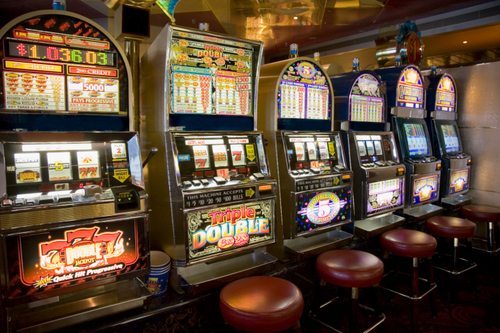Sound design is a fundamental part of the overall development of slots and casino games. Music effects have a huge impact on the overall experience of a player. They help to create an immersive and engaging experience worth pursuing. Developers realised this, and this has led to a greater emphasis on sound design. Hence, we are likely to get casino games and slots australia with cinematic melodies in addition to crisp graphics and captivating gameplay. Why are they so important?
Modern slots have elaborate themes that must be fully executed to enhance the player experience. The graphics cannot do the trick alone, music and sound effects have to be incorporated as well to set the theme. For instance, a Vegas-themed slot has to come with the music and noise of the busy Vegas strip to become more believable. This is borrowed heavily from the creation of films. A horror film tends to be more terrifying because of the sound effects. They make it possible for players to immerse themselves deeper in the theme.
Sound is also designed to elicit certain emotions from the player. It effects come into play even before you start playing to build anticipation for the game. As the game progresses, the sounds can continue to adapt to the prevailing situation. They could cause suspense and tension as you wait for the results and fanfare and excitement when you win. Most slots play jingles and clinking coins when you win, which could lead to a sense of reward. Conversely, a sombre tune could come into play when you lose. This makes the game more adaptive.
Sound effects and music also create a lasting impression on the player. Have you ever played a game, and the music kept ringing in your ears hours after? This is the impact of an exhilarating sound effect. As a result, players are likely to recommend the games to others leading to enhanced marketing.
Process of Sound Design
The importance of sounds in casino games shows why developers emphasise their design. It is usually a multidisciplinary process that involves designers, developers, composers, and others. They usually put a lot of effort into it before finally settling for the final one. Here is what is involved:
Game Conceptualization
The concept of the game must be well-understood before proceeding to start the process. The developers have to explain the concept to the composers and sound designers. The critical areas include the theme, the gameplay, the target audience, and mechanics. They have to understand whether it is a fast or slow-paced game. They only proceed once the concept is perfectly understood.
Storyboarding
A storyboard is a board that simply outlines the narrative of the game. It shows the moments that will need enhanced sound effects and musical emphasis. It breaks down the concept and adds context to it musically.
Development of the Music Theme
The composers must first create the main music theme that will play during the regular gameplay. It is usually the prevailing tune that creates a lasting impression on the players. The tune has to align with the game’s theme and must appeal to the players’ emotions.
Sound Design
The designers use the storyboard and the concept to create various sound effects to coincide with different events in the game. The main actions include hitting a big win, spinning reels, losing, shuffling cards, unlocking bonus rounds, and others. These effects are crucial in creating an engaging experience since they coincide with vital actions. For instance, when a player wins, they have to elicit happiness, and when the reels are spinning, they should incorporate suspense.
Integration & Testing
Once the process is complete, the music and sound effects are incorporated into the game, and testing is done. This part involves all the members of the team. They ensure that the sounds enhance the player experience positively. If they are not satisfactory, the composers and designers have to go back to the previous steps and make amends until the entire team is satisfied.
This is the general process of sound design. The latest technologies, such as artificial intelligence, Big Data, and procedural audio have been utilised in design to enhance the process of sound design. They use data analytics to make decisions that lead to a better experience. Thus, melodies have become more adaptive. Procedural audio leads to varying sounds, which kills the monotony of repetitions. These technologies are the future of audio effects in iGaming.
Sound design is a rigorous process that involves a multidisciplinary team of experts. It deserves all the emphasis it is getting because of the overall impact on the player experience. The process brings together creativity, innovation, talent, and technical expertise to accomplish. Sounds and music must be stellar to create an engaging gaming experience.




